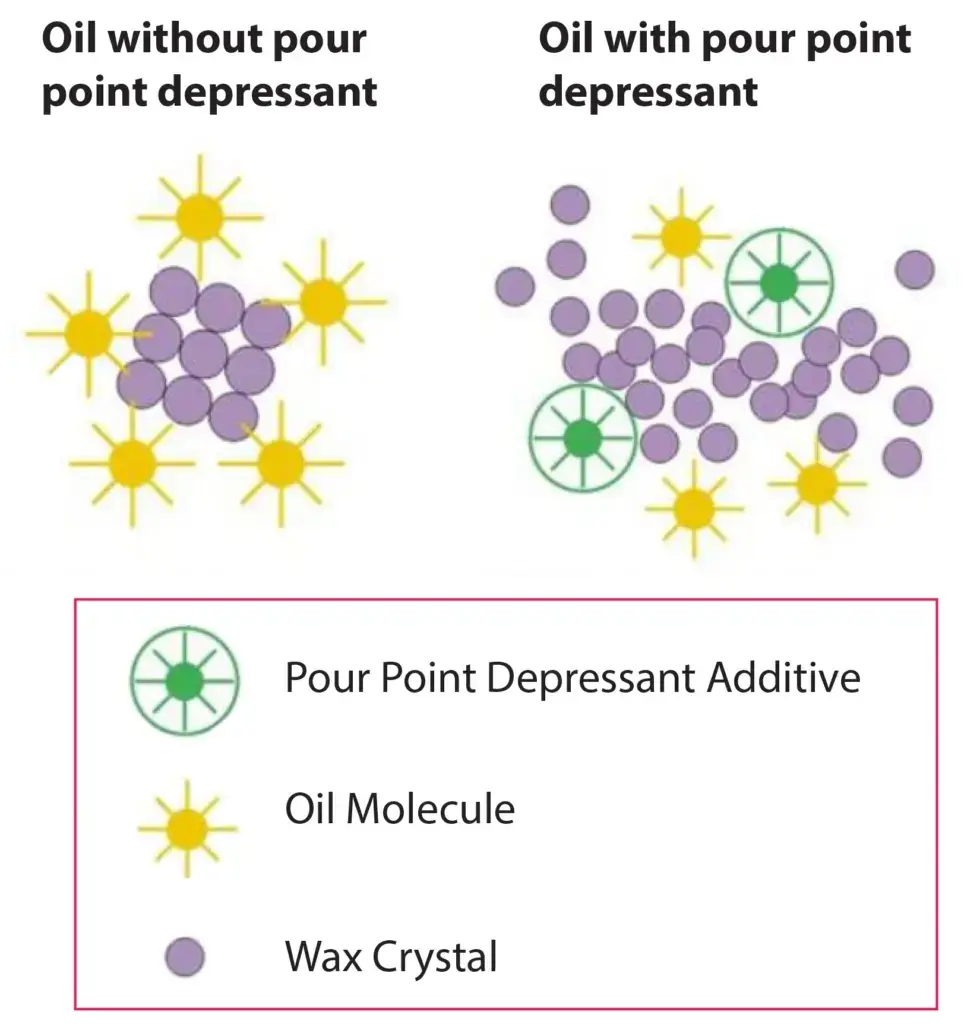Understanding Pour Point Depressants in Engine Oils
Exploring the Benefits of Pour Point Depressants in Engine Oils

In cold weather wax crystal in oil tend to clump together, reducing flow in the engine. Pour point depressants interfere with the clumping and help the oil flow better in cold temperatures
Pour point depressants are additives used in engine oils to improve fluid flow at colder temperatures. They work by inhibiting the formation of wax crystals that can occur in oil when temperatures drop below a certain point, effectively lowering the temperature at which the oil will still flow properly (the “pour point”).
Most modern conventional and synthetic engine oils already contain suitable depressant additivess to allow flow down to around -20°F to -40°F. So DIYers don’t need to worry about adding more on their own.
Common pour point depressant additives include polymethacrylates (PMAs), alkylated naphthalenes, and polyalkyl styrenes. These help keep motor oil flowable in frigid winter temperatures.
The official definition of a pour point depressant is: The lowest temperature (in °F or °C) at which a motor oil remains pourable. Synthetic oils and lighter viscosity oils have a lower pour point, so they remain pourable at lower temperatures.
Don’t confuse pour point with pumpability
Some oil companies demonstrate how well their synthetic oil flows when cold, as compared to conventional oil. But that comparison is meaningless because the most important characteristic you care about during cold startup is the oil’s pumpability and that is expressed in it XW rating; like 0W-20 or 5W-20.
©, 2023 Rick Muscoplat
Posted on by Rick Muscoplat
